On 29 and 30 August 2018, the 1st Working Group meeting held in Yangon, brought together 36 Medical Doctors, Lab technicians and Directors from the 9 hospitals selected to participate in the Leptospirosis survey to be conducted by the National Health Laboratory.
Additionally to NHL microbiologists, Pr. Yupin Suputtamongkol from the Division of Infectious Diseases and Tropical Medicine of the Faculty of Medicine Siriraj Hospital in Bangkok, Dr. Patrice Piola, Head of Epidemiology Unit at Institut Pasteur du Cambodge and Dr. Etienne Chevanne, veterinarian epidemiologist were invited as experts to exchange with personnel from hospitals.
The meeting was opened by Pr. Htay Htay Tin, Deputy Director General (Labs) who reminded the challenge for medical and lab diagnosis of Leptospirosis and the potential importance of this neglected disease in Yangon where extreme weather events are a priori increasingly frequent.
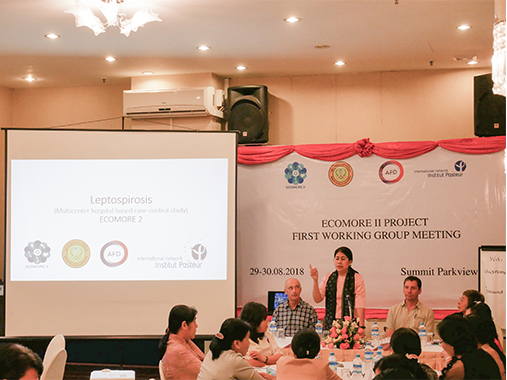
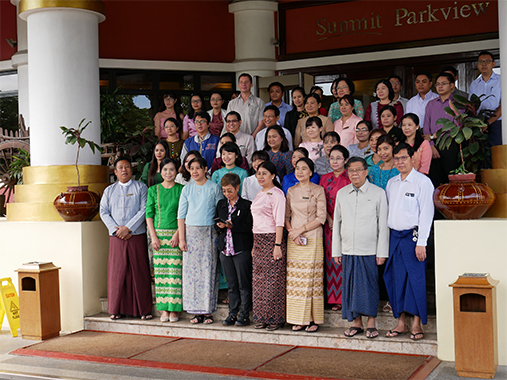
This primary Knowledge Translation event was preceded by a 1-day visit of 3 hospitals by the external experts, to better understand the workflow at hospital and particularly at Out-Patient Department. They could meet Medical Doctors at reception of OPD and at Infectious Diseases Units; it appeared that establishing an appropriate clinical case definition and supporting screening of out-patient with mid-clinical signs is a key challenge of the study. Pr. Yupin Suputtamongkol and Dr Patrice Piola were accompanied by Dr Si Thu one of the 3 National Coordinators of the survey, to, visit Yangon General Hospital (City center), New Yangon General Hospital (City Center) and Insein Hospital (suburban area)
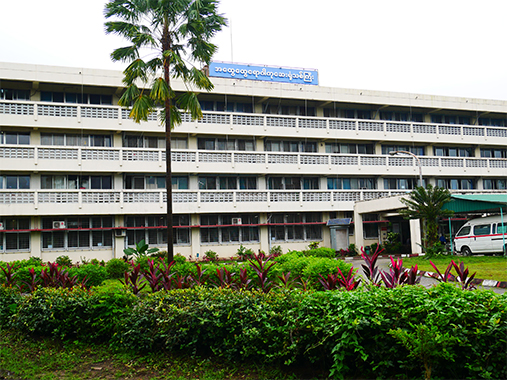
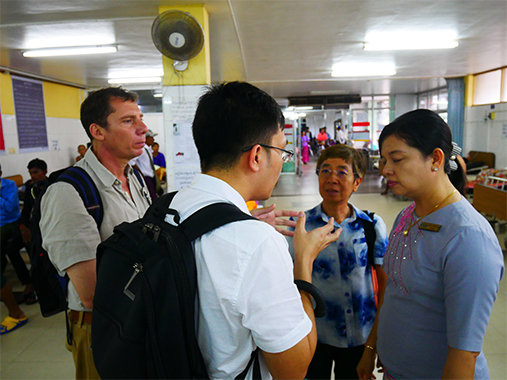
Discussions chaired by the 3 National Coordinators were animated; the long and recognized clinical experience of Pr. Yupin Suputtamongkol from Siriraj Hospital in Bangkok allowed to reach an agreement of all participants on the clinical case definition and organization of the workflow during this 3-month pilot phase of the project; she is a hospital practitioner and so she can overview logistic constrains at hospital. The support of Pr. Kyaw Zin Wai, who has already experienced clinical research in collaboration with NHL in the framework of ECOMORE 1 project, was invaluable to achieve a consensus on screening patients at OPD. Dr. Patrice Piola, as epidemiologist explained the importance of not missing mid-severe cases at OPD to assess the burden of Leptospirosis in the community; he justified that working with few in-patient showing severe clinical signs will not provide enough data for statistical analysis and also that severe cases can be hospitalized in various wards according to symptoms. Dr. Etienne Chevanne organized a detailed review of the Case Reporting Form with Medical Doctors to include outputs of the WG technical discussions and to simplify/adapt wording and to shorten the form.

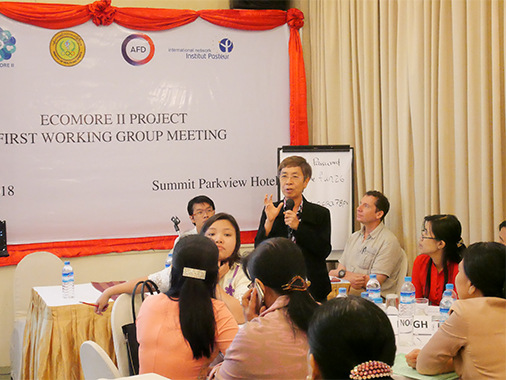
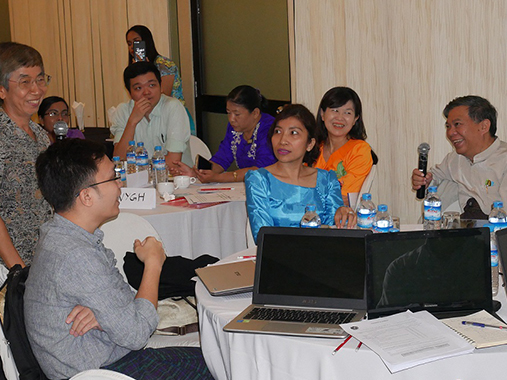
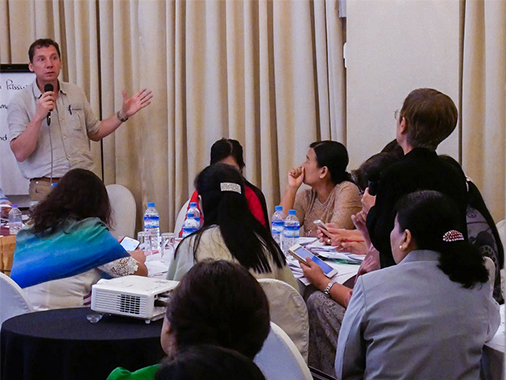
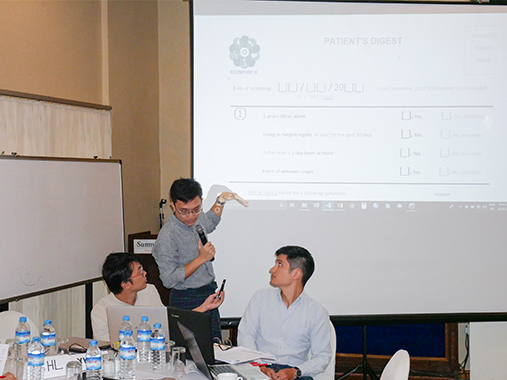
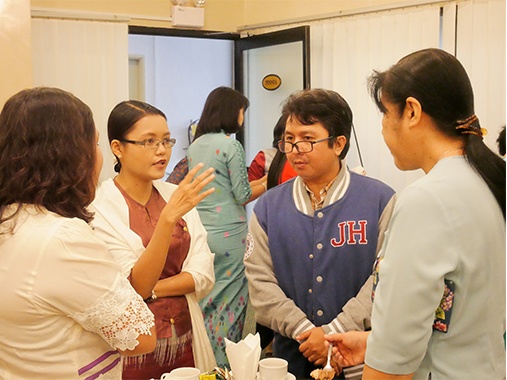
The main conclusions of the Working Group discussions were:
- Participants acknowledged the requisite screening of patients at OPD to identify mid-form of Leptospirosis.
To be effective and to prevent impairing normal work at the OPD it has been agreed to recruit one staff under ECOMORE project in each participating hospital to pre-sort patients consulting for infectious disease (trauma, NCD, pregnancy, follow-up of surgery…are automatically excluded) and so to fill the Digest Form for all these patients; finally, they will complete the CRF for those scoring as suspected cases for Leptospirosis.
During the 3-month pilot phase, only 3 hospitals will be selected to allow the 3 National Coordinators (they are Medical Doctors) to monitor closely the screening method and so to come up with a solution tailored for each hospital. After this evaluation period, the other 6 hospitals will benefit of this experience to arrange proper OPD screening with as little disruption as possible.
According to Pr. Yupin Suputtamongkol, the 3 hospitals to be selected for this pilot phase should be these with the highest chance to detect Leptospirosis, using data of previous years or specific location in flooded areas or with large community of low income population; the intention is to demonstrate that Leptospirosis is endemic in Yangon and so to raise awareness and motivation of Medical Doctors involved in the survey.
The 3 National Coordinators selected accordingly Insein, Thanlyin and Thingangyun Sanpya General Hospitals for implementing screening at OPD and IPD (in-patients department); only suspected patients will be identified only in IPD in the 6 other hospitals during the pilot phase.
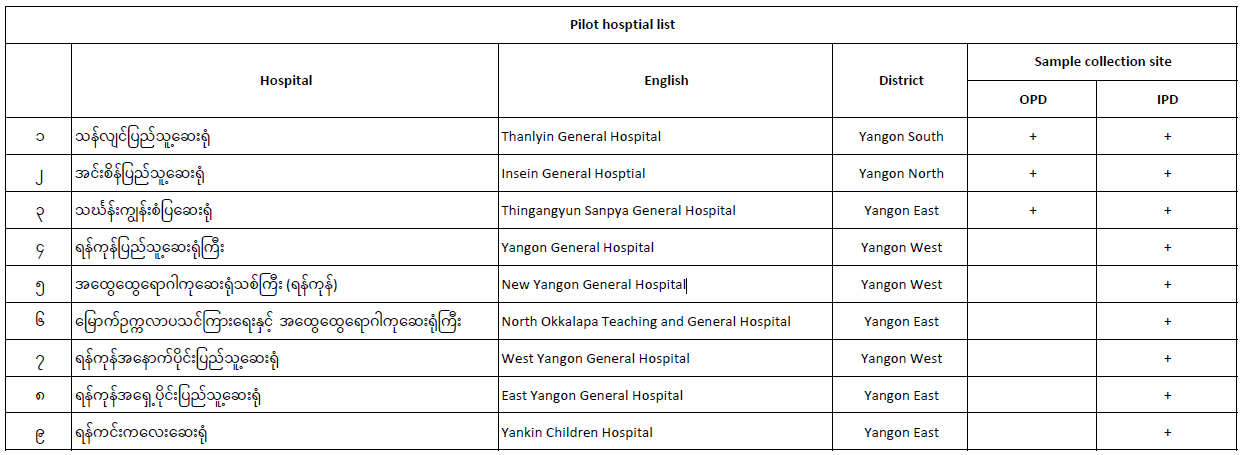
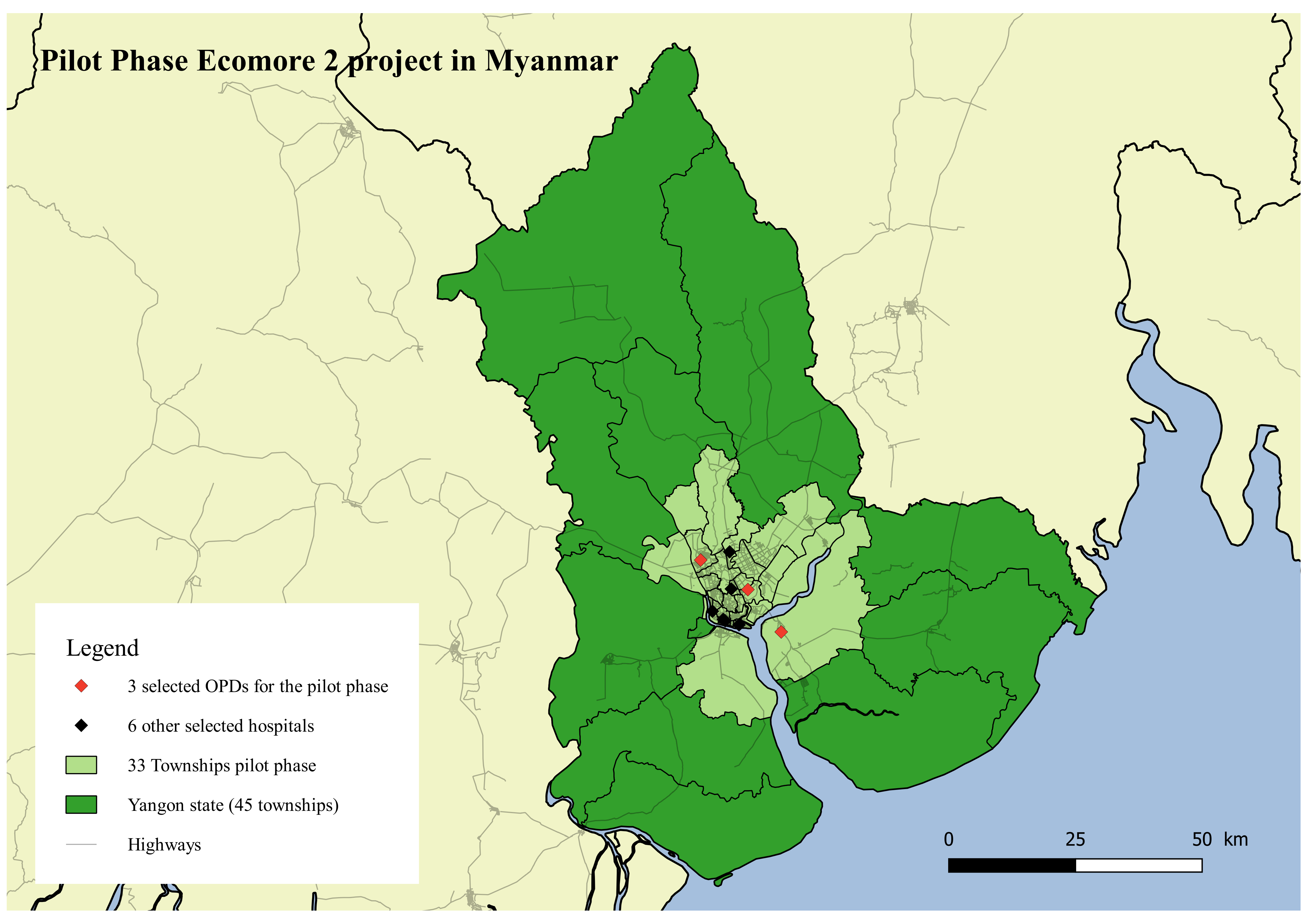
- Another major objective of this WG was to discuss and review the case definition to prevent missing any case of leptospirosis. Originally the protocol described the WHO Faine’s modified scoring table that actually according to Pr. Yupin Suputtamongkol is outdated and not more used. Dr. P. Piola confirmed that the surveillance case definition should have a high sensitivity, and negative predictive value with an average specificity in diagnosing leptospirosis.
Suffering from a day-3 fever at the time of the consultation with no obvious source of other infection and at least two out of the four following symptoms:
- Muscle pain/tenderness, especially calf muscle
- Headache of sudden onset
- Jaundice
- Conjunctival suffusion (bilateral)
This case definition based on Pr. Yupin Suputtamongkol hospital experience in management of Leptospirosis in Thailand and several publications in SEA region was approved by participants; it is assumed that the case definition should be amended after the pilot phase implementation if NHL is over-loaded of samples (and budget over-spending) because of limited specificity of the case definition. - Additionally laboratory operating procedures have been clarified on handling specimen, schedule for transportation…and the list of contact persons at hospital laboratory is established for the 9 hospitals.
A second Working Group will be organized at the end of the pilot phase, likely beginning of December 2018 to share experience, to amend if needed organizational procedures and case definition and to prepare implementation in the 9 hospitals before the next rainy season.

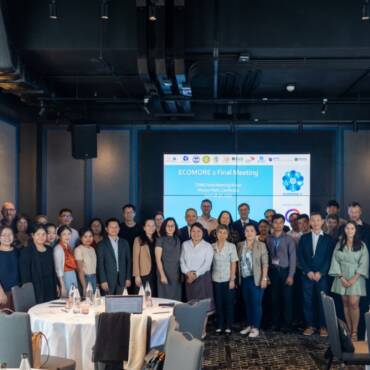
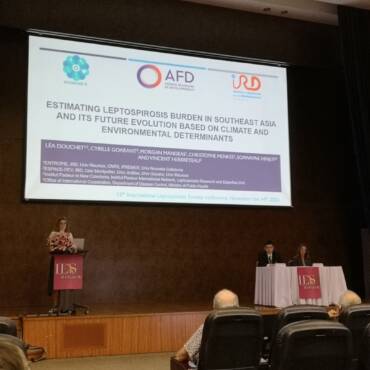
Add Comment